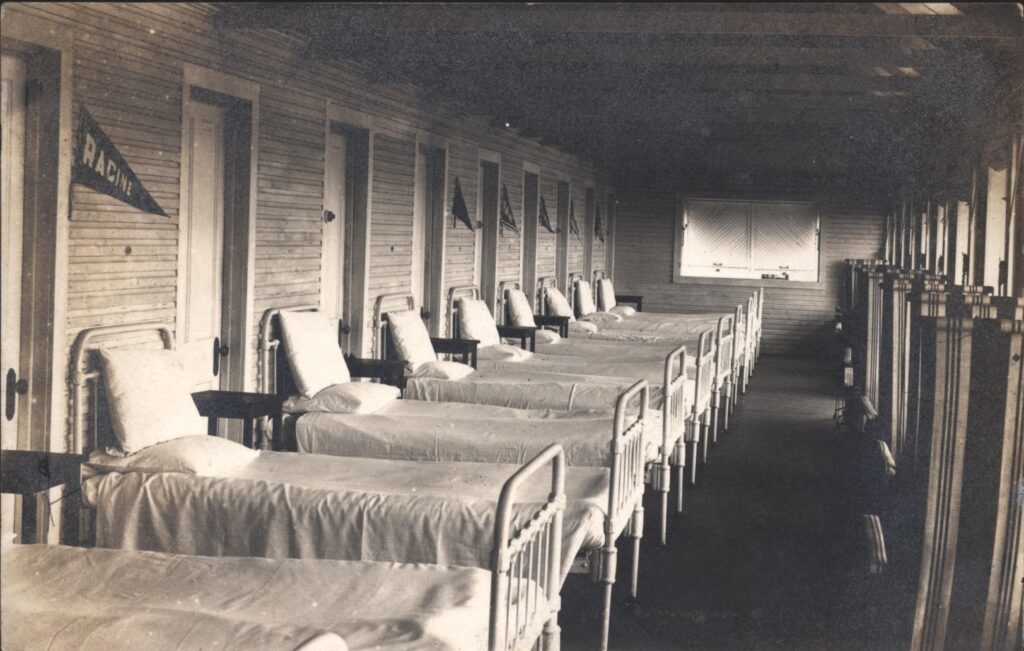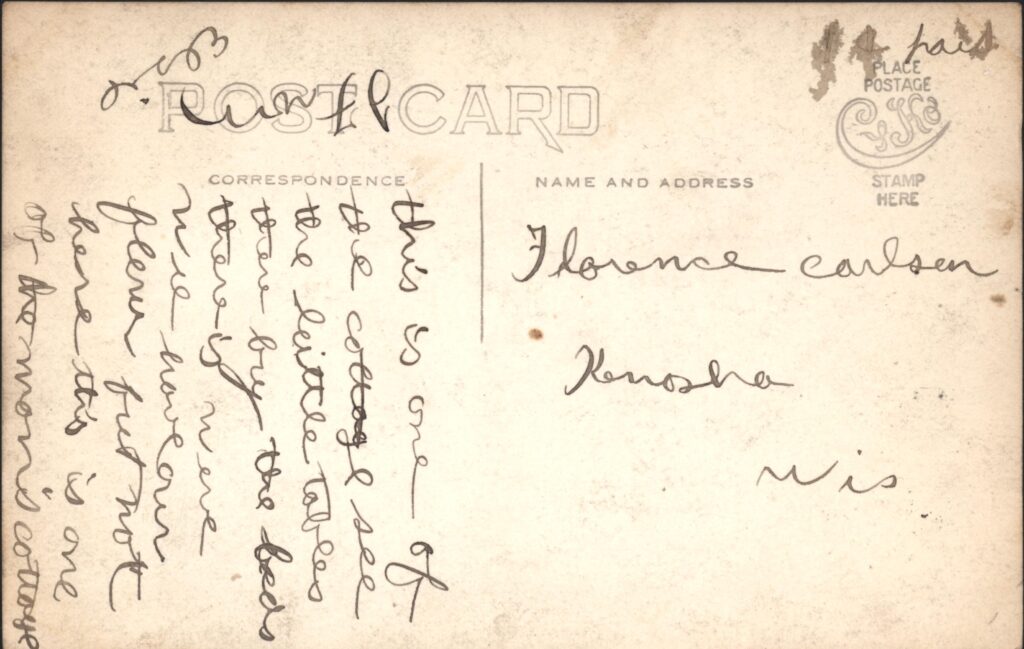

This is the postcard of what we think might be a tuberculosis ward’s outdoor porch. I went ahead and bought this from Ebay so that I could scan it at 600 dpi to see if we could get any more clues.
Divided-back postcards are from after March of 1907.
Every bed has a door, but there are rotary switches only every other door.
Each bed has some kind of a socket a foot or 18″ above the head of the bed. Maybe for an old gas fixture?
The beams of the porch roof are clearly visible.
There looks like there might be a little iron-framed stool for use with the canvas chairs. Each chair seems to have an individual awning and shade, each with their own cords.
The other hypothesis we had about this scene was that it was a sports camp, but now that I can see more details, I’m leaning toward the tuberculosis ward theory.
Racine Journal-Times, February 10, 1998
Back in Time: Sunny Rest Sanitorium
In 1911, the state legislature passed an act authorizing counties to buy sites and erect hospitals or sanitoriums for the care of people afflicted with tuberculosis.
The Racine County board purchased 20 acres in the Town of Mount Pleasant and made an appropriation for establishing the Sunny Rest Sanatorium. The sanitorium opened in August 1913. Originally, accommodations were provided for 24 patients, but additional room was made by enclosing some of the porches. In July 1916, there were 36 patients.
Sunny Rest was enlarged in 1936 and again in 1939. By the 1940s, tubercular patients who wanted to get into Sunny Rest had to put their names on a waiting list.
But as modern medicine conquered tuberculosis, the need for the sanitorium lessened. In 1960, 80 Racine area residents being treated for TB were living at home and returning to the sanitorium just once a month for a checkup and medication. Only 20 of the institution’s 78 beds were occupied.
The sanitorium closed in December 1972 and was razed in the summer of 1973.